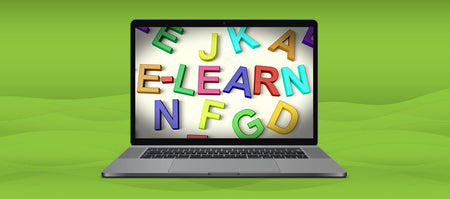Latest Posts

In Your Corner, Leadership and Change Management
Unlock Unlimited Learning With Collective Efficacy
We want all of our students to succeed. We worry, nudge, and cajole in our efforts to reach every learner. Yet, too often we feel as though we can only do so much, especially by ourselves. Despite our best efforts, success with every student can remain out of reach.
Interestingly, the answer may not lie in our best efforts while working alone. A growing and powerful body of research points to the potential of collective effort and efficacy as a game-changer for lifting the learning of students regardless of past performance, socio-economic background, cultural context, or other factors that traditionally have been associated with a lack of learning success.
The power of collective teacher efficacy has been studied and documented for years, but a recent meta-analysis of research studies conducted by internationally respected researcher John Hattie places this factor at the top of the list of approaches that can transform student learning. His analysis ranks collective teacher efficacy as far more predictive of student achievement than socio-economic status, prior achievement, or even home environment.
However, collective teacher efficacy is more than aspirational statements, goals in a strategic plan, or a collection of instructional strategies. Collective teacher efficacy grows out of a set of beliefs and practices that when combined, create a powerful force for lifting student achievement. Granted, building strong collective efficacy takes time, but the results it can generate in student success are compelling. Here are five keys to building the collective efficacy that can unleash unlimited learning for students.
#1: Shared trust. The first key unlocks relationships among team members. Trust forms the foundation on which the other keys depend for success. Building trust requires that we assume the positive intentions of others. When the behavior of team members falls short, we view it as an exception rather than evidence of untrustworthiness. Trust also requires team members to be vulnerable with each other. Admitting mistakes, not claiming to have all of the answers, and asking for help are building blocks for strong, sustainable trust. Trust creates conditions that allow for shared risk-taking, mutual support, and a collective search for solutions.
#2: Shared belief in the potential of learners. Learners rarely perform at levels beyond what we expect and support. This key opens opportunity for all learners to learn beyond perceptual boundaries and excel beyond past performance. Unless team members believe that learners are capable and have the potential to learn at high levels, other efforts to unleash exceptional learning are not likely to be successful. Past performance, cultural and economic background, and other factors cannot be allowed to temper our aspirations and limit what we will support learners to achieve.
#3: Shared confidence in our abilities and commitment to be successful with all learners. Beyond believing that learners have the potential to be successful, team members must share the belief that they have the power to reach and lift the learning of any individual or group of students. Complementing the belief in our capacity needs to be a shared commitment to see that every student does succeed, no matter the challenges and barriers. Without a strong, shared belief in our potential and a commitment to have a positive impact, the pressure to compromise, lower expectations, or even give up can be difficult to counter.
#4: Shared learning and expertise. If we had all of the answers and knew all of the solutions to the problems we face, our task would be easy. However, such is not the case with most learning challenges we face. This key to unlocking unlimited learning requires team members to commit to our own learning and build expertise to confront the difficulties our students face. Shared learning and access to each other’s expertise not only builds a strong team, it allows each member full access to the combined resources of the team. To overcome complex, long-standing learning challenges, everyone’s knowledge and skills need to be applied.
#5: Shared framework and criteria for progress and success. Without targets, progress markers, and success criteria, it can be almost impossible to build and sustain team momentum, progress, and focus. On the other hand, when goals are clear, progress can be monitored, problem areas can be identified, and the team is empowered to allocate time, energy, and expertise to areas most in need of attention. Further, success frameworks and criteria can be strong motivators, confidence builders, and evidence indicators of unlocked, unlimited learning.
The research is clear. By working together, learning together, supporting each other, and sharing a commitment to the success of all students, we can accomplish amazing things. Each collective efficacy key is important to the success of the whole. When we combine them into an integrated effort, we create a force for learning that is nearly impossible to stop.

In Your Corner, Leadership and Change Management
The Case for Classroom Observations Despite the Pandemic
The question of whether to continue classroom observations during the pandemic has stimulated debate and led to varied responses as teaching and learning contexts have shifted from in person to hybrid, remote, and other strategies. Some people have argued that the challenges of new and shifting instructional arrangements make observations logistically difficult. Others have observed that conducting observations adds needless and avoidable stress for educators. Still others question whether the information collected is useful since disruptions and frequent transitions undermine the consistency of instruction and flow of learning.
Each of these arguments has a measure of merit. Traditional in-person walk-throughs are not as accessible in hybrid settings and not practical in remote learning arrangements. Yet, technology tools available in most schools make virtual visits to online classes manageable and breakout rooms, chat messages, and other features make connecting with and listening to students doable. The argument that observations during challenging times can add stress makes sense. However, the purpose of classroom observations as opportunities for support and improvement, not as opportunities for embarrassment and criticism, needs to be emphasized even more during the pandemic than at other times. We need to reinforce the purposes of observations and potential benefits to reassure and dispel unfounded concerns. Finally, while use of information collected from observations during this time might not be useful to inform year-to-year trends, there are compelling reasons to collect data even now.
Despite the challenges and adaptations to be thought out, here are eight reasons to consider conducting classroom observations, even during the pandemic. First, classroom observations can reinforce our commitment to and support for the work of educators. Taking time to observe, listen, reflect, and converse conveys respect, caring, and value for the work going on in classrooms.
Second, classroom observations now can support the collection of information regarding how learning and teaching processes are continuing while under stress. Examples of adaptations, innovation, and creativity can be shared within the school community and communicated to the community at large as reassurance that learning and teaching continue despite the pandemic.
Third, observations can reveal needs and challenges that are not obvious and may not have been identified through other channels. Teachers may be reluctant to report some conditions that limit their effectiveness. In some instances, they may not even be aware of barriers and limits that classroom observations can surface.
Fourth, classroom observations can reveal resource needs and inconsistencies that need to be addressed. Again, individual teachers may not be aware of technology and other resources that could be made available if the need is documented. Real-time observations can inform decision makers and result in better, more equitable distribution of resources.
Fifth, classroom observations and conversations can help to identify professional learning needs that are unique to the pandemic. For example, multiple observations may reveal a common issue with a technology tool and point to the need for additional instructional and classroom management strategies.
Sixth, classroom visits can support the collection of stories of resilience, quality practices, uninterrupted learning, and heroism to share as inspiration and examples to others. Often a compelling example or powerful story can give hope to persist despite the challenges.
Seventh, classroom observations are important opportunities to communicate caring and support for the work of educators in personal and specific ways. It is important to offer general support and gratitude for what educators and learners are doing during this time. It is equally important to communicate specifically and personally our respect, appreciation, and encouragement in response to what we see.
Eighth, classroom observations can support the collection of information that will inform planning needs and priorities for the transition once the pandemic subsides. We know that some students have struggled to learn at expected levels. New solutions and strategies have been developed that need to be captured and utilized. New technology tools and innovative applications have been discovered that will be useful long-term and will need to be supported during the transition. If we are unaware of and attention is not given to these and other issues and opportunities, we risk losing them as we move to a new post-pandemic normal.
Certainly, it can be tempting to suspend classroom observations during the pandemic. Yet, making such a choice risks missing opportunities to encourage and support staff, ignoring information that can inform decision-making, and missing crucial insights that can build understanding and support within our communities.
Learn how to conduct more effective observations with the weCLIMB Observation Solution
Share Your Tips & Stories
Share your story and the tips you have for getting through this challenging time. It can remind a fellow school leader of something they forgot, or your example can make a difficult task much easier and allow them to get more done in less time. We may publish your comments.
Send Us An Email













